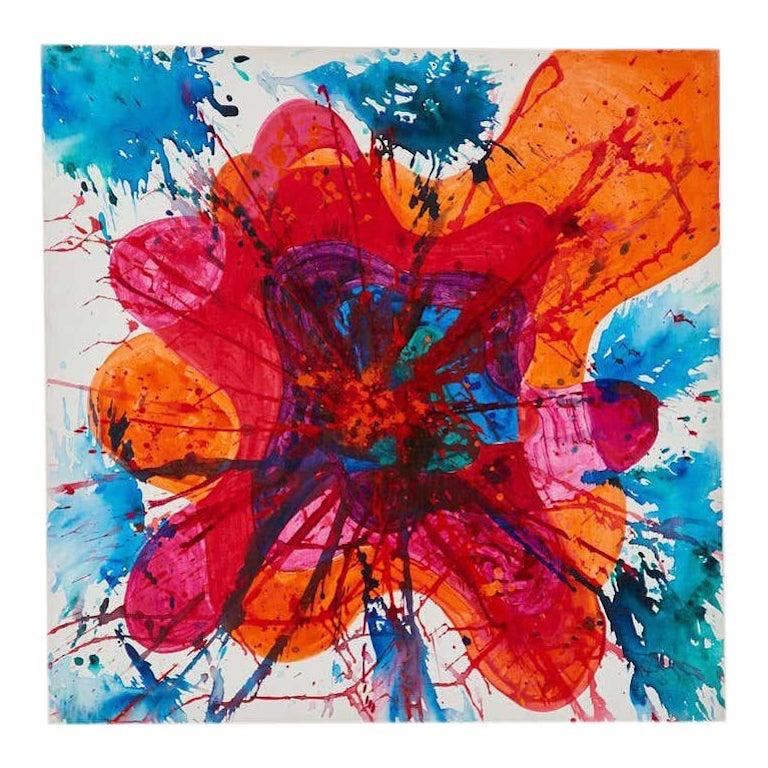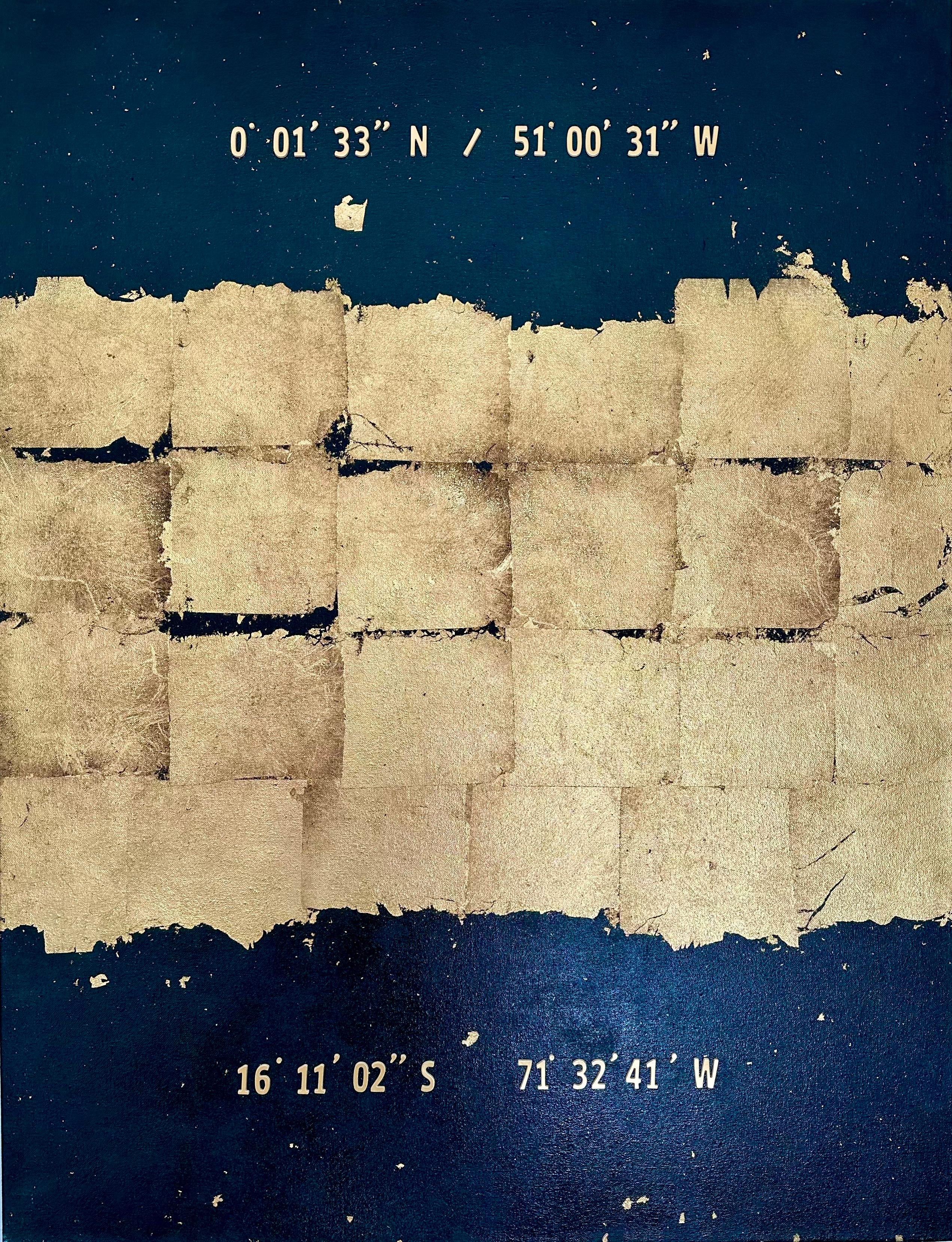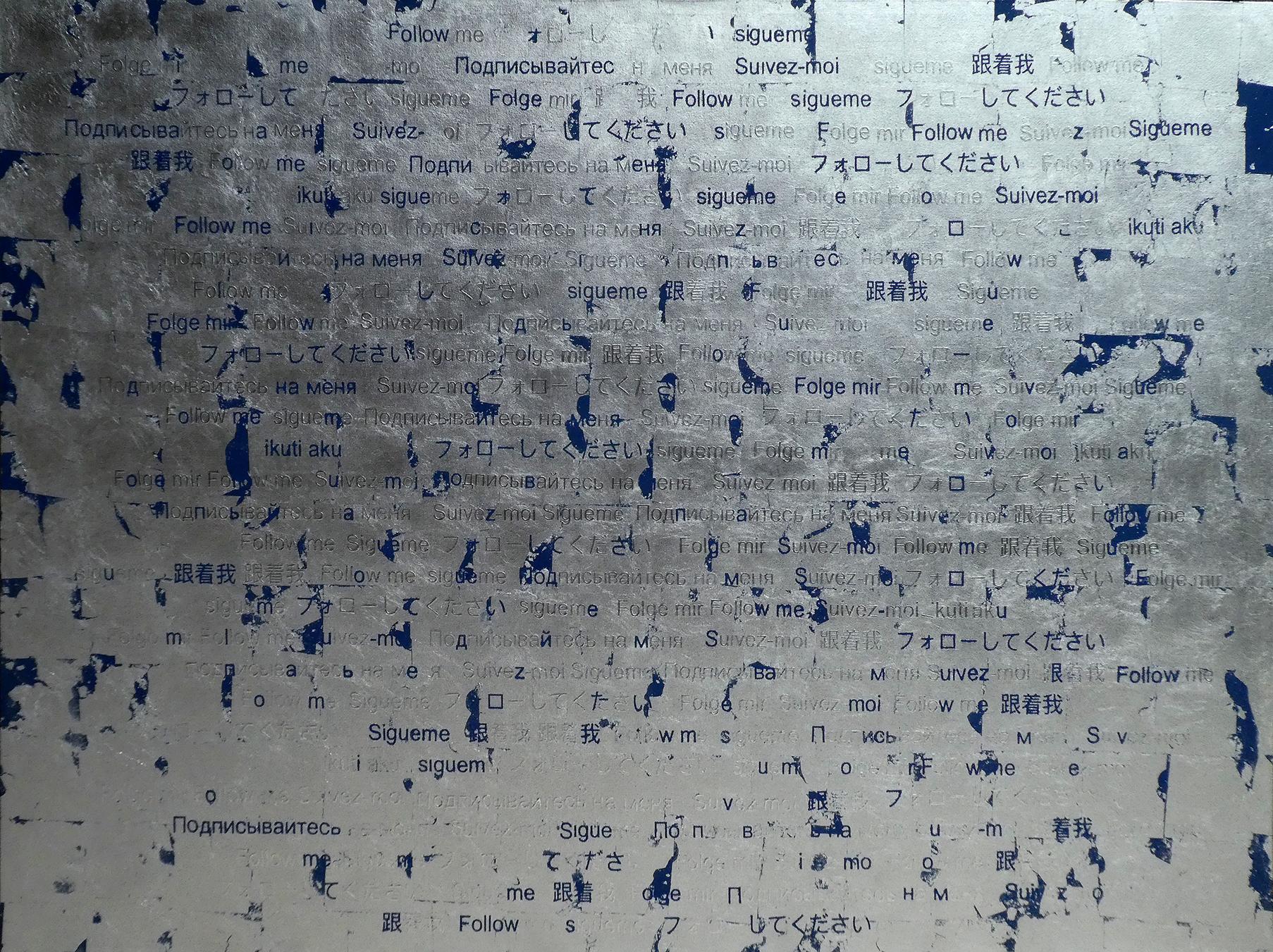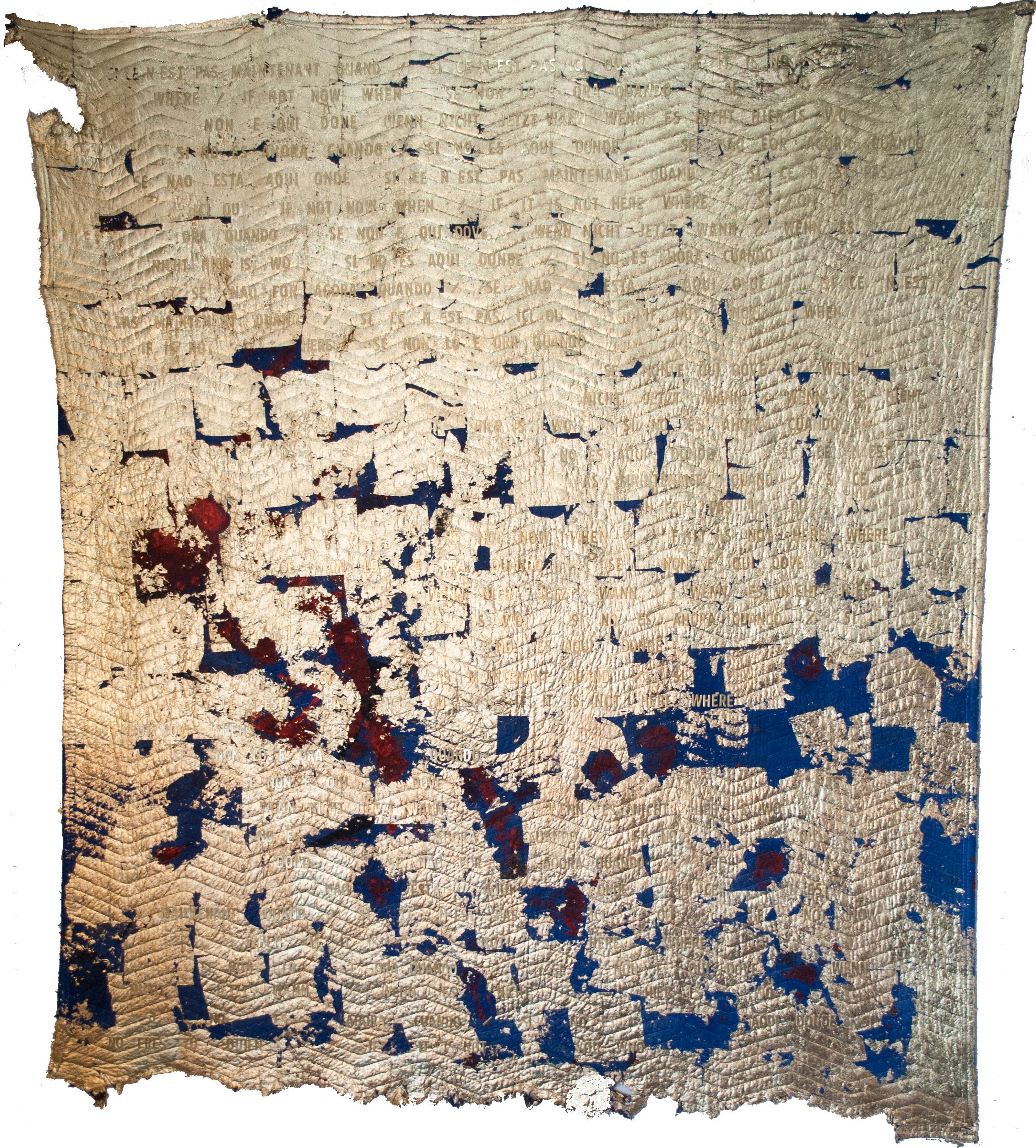Items Similar to Surrealist Armenian American Artist Stephen Sacklarian Biomorphic Oil Painting
Want more images or videos?
Request additional images or videos from the seller
1 of 6
Stephen SacklarianSurrealist Armenian American Artist Stephen Sacklarian Biomorphic Oil Painting1982
1982
About the Item
Stephen Sacklarian 1899-1983
Sacklarian studied art at the Pennsylvania Academy of Fine Art, the T- Square Club-School for Architects, The Philadelphia College of Art, the Fleisher Memorial Art School, and in private study with the famous sculptor, Paul Manship.
Over a long and productive career, during extensive travel, Sacklarian visited with Picasso, Henry Moore, Gorky, Matisse and other prominent artists. Sacklarian would always tell anecdotes and speak fondly of the times he visited their studios. Sacklarian was artists-in –residence at Notre Dame University. He was also a guest lecturer at numerous other Universities. Sacklarian received numerous awards and honors throughout his long career.
Sacklarian’s artistic world is populated with amorphous figures and whimsical forms that often float against bright, angular backgrounds or subtle dark fields of color. Sacklarian is quite sophisticated in his use of color, perspective, and composition. Each painting is unique and unusual. Some are brooding; most are charming and full of mischievous humor. Many have sly sexual references. Sacklarian’s palette favored bright rich colors. He is considered by critics to be a true master painter
Sacklarian’s paintings have sold at auction at Phillip’s, Sloan’s, Christie’s and Sotheby’s.
Sacklarian’s paintings are in over 60 museums around the world including The Smithsonian Institution, National Museum of American Art, The Philadelphia Museum of Art, The Minneapolis Museum of Art, The Everson Museum of Art, The Museo de Arte Moderno, Mexico City, The Royal Fine Arts Center, Brussels, Belgium and The Museo National de Arte, La Paz, Bolivia.
- Creator:Stephen Sacklarian (1899 - 1983, Bulgarian)
- Creation Year:1982
- Dimensions:Height: 40 in (101.6 cm)Width: 29.5 in (74.93 cm)
- Medium:
- Movement & Style:
- Period:
- Condition:Measurements include frame.
- Gallery Location:Surfside, FL
- Reference Number:
About the Seller
4.9
Platinum Seller
These expertly vetted sellers are 1stDibs' most experienced sellers and are rated highest by our customers.
Established in 1995
1stDibs seller since 2014
1,548 sales on 1stDibs
Typical response time: 1 hour
- ShippingRetrieving quote...Ships From: Surfside, FL
- Return PolicyA return for this item may be initiated within 3 days of delivery.
More From This SellerView All
- Modernist Abstract Oil PaintingBy Hea Sook YooLocated in Surfside, FLHea-Sook Yoo, artist, internationally renowned, has her paintings hanging in residences, businesses and art galleries on three continents over three decades.Ms. Yoo is classically tr...Category
20th Century Modern Abstract Paintings
MaterialsCanvas, Oil
- Large Oil Painting Israeli Pinchas Litvinovsky Jerusalem Israel Bezalel SchoolBy Pinchas LitvinovskyLocated in Surfside, FLPinchas Litvinovsky (Russian/Israeli, 1894-1985) A group of people, Jerusalem Types Hand signed indistinctly (lower right) in English and in Hebrew Verso. Oil on canvas Dimensions 16 1/8 x 51 1/16in Pinchas Litvinovsky (1894-1985) was a prominent Israeli painter, born in the Russian Empire (now Belarus) in Novo-Georgiyevsk, Russia. As a student he visited the Bezalel exhibition in Odessa and met Boris Schatz, the founder of the Bezalel School of Arts and Crafts. Schatz persuaded the young, talented student to study art in Jerusalem at Bezalel. He immigrated to Palestine in 1911, where he became a key figure in the local art scene and was among the pioneers of Israeli art. Litvinovsky studied art in Odessa and later in Paris at the Académie Julian. In the 1930’s he traveled to Paris, France where he encountered the art of Henri Matisse, Pablo Picasso and artists of the Ecole Juif Jewish School of Paris. (Marc Chagall, Modigliani, Chaim Soutine). Litvinovsky worked in many modernist styles, especially Cubism as reflected in the Russian constructivist paintings of the 1920’s His work, which includes landscapes, portraits, and biblical scenes, reflects a blend of European influences and Middle Eastern motifs. He was a member of the Bezalel group of artists and participated in the establishment of the Tel Aviv Artists' House. Throughout his career, Litvinovsky's art evolved, but he remained dedicated to exploring the unique light and landscapes of Israel, contributing significantly to the cultural fabric of the young nation. Select Group exhibitions Jewish Artists Association, Levant Fair, Tel Aviv, 1929 Artists: Arie Allweil, Ludwig Blum, Nachum Gutman, Itzhak Frenel Frenkel, Reuven Rubin, Shmuel Schlezinger, Eged - Palestine Painters Group, Allenby Street, Tel Aviv, 1929 Artists: Chana Orloff, Abraham Melnikoff, Sionah Tagger, Elias Newman, A Collection of Works by Artists of the Land of Israel The Bezalel National Museum, Jerusalem, 1940 Artists: Moshe Mokady, Jakob Steinhardt, Anna Ticho, Joseph Budko, Mordecai Ardon, Moshe Castel, Abel Pann, Hermann Struck, Rina Gallery, Jerusalem Artists: Motke Blum, Efraim Fima (Roytenberg, Ephraim) Zelig Segal, David Sharir, Joseph Halevi, David Caftori, Menashe kadishman, Dedi Ben Shaul, Raffi Lavie Exposition des Artistes de Jérusalem Grand Palais, Paris, France Artists: Samuel Ackerman, Marek Yanai, Zvi Tolkovsky, Zvi Miron Sima...Category
20th Century Modern Abstract Paintings
MaterialsCanvas, Oil
- Polish French Ecole de Paris Mid Century Modernist Oil Painting Clown JugglerBy Abram KrolLocated in Surfside, FLAbram Abraham Krol was born January 22, 1919, in Pabianice (Lodz), Poland. Abram Krol went to France in 1938 to study civil engineering at the Universit...Category
1950s Modern Figurative Paintings
MaterialsCanvas, Oil
- Modernist Abstract Expressionist Watercolor Painting Bauhaus Weimar Pawel KontnyBy Pawel KontnyLocated in Surfside, FLAbstract watercolor composition bearing the influence of the earlier color-block compositions of Paul Klee. Pawel August Kontny, (Polish-German-American artist) He was born in Laurahuette, Poland, in 1923, the son of a wealthy pastry shop owner. In 1939 he began studying architecture in Breslau where he was introduced to the European masters and to the work of some of the German Expressionists, soon afterward banned as "degenerate artists" and removed from museums throughout Germany by the Nazi regime. His studies were interrupted by World War II. Drafted into the German army, traveling in many countries as a soldier, he sketched various landscapes but in 1945, he was captured and held as a prisoner of war in Italy. After the war, he studied at the Union of Nuremberg Architects to help design buildings to replace ones destroyed in the war. He recorded his impressions of the local population and the landscapes through his watercolors and drawings. Pawel Kontny thereafter moved to Nuremberg, Germany, becoming a member of the Union of Nuremberg Architects and helping to rebuild the city's historic center. He soon decided to concentrate on his professional art career. He married Irmgard Laurer, a dancer with the Nuremberg Opera. Pavel Kontny 's career as an artist was launched with his participation in an all German exhibition, held at the Dusseldorf Museum in 1952. He held one-man shows in Germany, Switzerland and the United States. During his trip to the United States in 1960, Kontny became instantly enamored with Colorado, and decided to relocate to Cherry Hills with his wife and two children. He quickly established himself in the local art community, being affiliated for a time with Denver Art Galleries and Saks Galleries. His subject matter became the Southwest. During this time he received the Prestigious Gold Medal of the Art Academy of Rome. His extensive travel provided material for the paintings he did using his hallmark marble dust technique. he also worked equally in pastel, watercolor, charcoal and pencil-and-ink. in a style which merged abstraction and realist styles, influenced by Abstract Expressionist painting and South Western American landscapes. In the early 1960s he was one of only a few European-born professional artists in the state, a select group that included Herbert Bayer (1900-1985), a member of the prewar Bauhaus in Weimar and Dessau, Germany, and Roland Detre (1903-2001), a Hungarian modernist painter. As a Denver, Colorado resident, Pavel Kontny exhibited at galleries and museums throughout the United States, Germany and Japan. There, he was inspired by frequent trips to Native American pueblos in the Southwest, as well as by the study of the Plains Indians of Montana and Wyoming. Over the years Kontny had a number of students and generously helped young artist by hosting exhibitions at his Cherry Hills home. For many years he generously donated his paintings to support charitable causes in Denver. Influences during his European years included German pastelist C.O. Muller, German Informel painter Karl Dahmen and Swiss artist, Hans Erni. In the early 1950s his painting style showed the influence of the Die Brücke (The Bridge), a group of German expressionist artists formed in Dresden in 1905 who had a major impact on the evolution of modern art in the twentieth century in Germany. By the middle of the decade his style incorporated more referential abstraction and total abstraction, resulting in part from his study of Hans Hartung, a German artist based in Paris who exhibited his gestural abstract work in Germany. The American moon landing in 1969 inspired Paul Kontny...Category
20th Century American Modern Landscape Paintings
MaterialsCanvas, Oil
- Large Abstract landscape of Jerusalem Israeli Oil Painting JudaicaBy Avraham BinderLocated in Surfside, FLLarge gilt framed abstract modernist landscape of Jerusalem. Framed it measures 33.25 X 41.25 inches. Canvas measures 28 x 36 inches. Bold Blue sky. Avraham Binder was born in 1906 in Vilnius (or Vilna), now part of Lithuania. He began painting at an early age and completed the prescribed studies in painting at the academy of arts in his native city. Upon graduation, at the commencement exhibition of works submitted by the graduates, he was awarded a prize in recognition of his talents. Artistic talent had deep roots in the Binder family. Avraham's father and grandfather were both artistically inclined, as was his sister Zila Binder and daughter Yael. In fact, he came from a long line of master artistic bookbinders, hence the family surname. The Binder family emigrated to Palestine in 1920. There, his father established a bookbinding workshop in Tel-Aviv while Avraham pursued painting. Binder has not identified with any particular modern school nor narrow artistic doctrine. He struggles to verbally explain his personal conception. Instead, he derives inspiration from emotions, resulting in a great variety of artistic treatments. Particularly memorable are his urban landscapes with their predominance of blues and aquamarines, composed of a profusion of squares and rectangles, crowding one another and covering nearly the entire canvas. The angular shapes are interspersed with radiant dots of red, gold and yellow, like the lights of the big city. Those squares and rectangles reflect, perhaps, impressions of a childhood spent among books which were scattered about the home and workshop of his father, the bookbinder. These shapes, no doubt, had their influence upon the artist whose first youthful impressions were – books. Traces of these shapes are discernible in Binder’s work to this day, in the angularity of splashes of color which, no longer crowded together, are now well separated to create an airy spaciousness. Not only the splashes of color – the inventing space, too – creates figurative effects in the artist’s treatment. Avraham Binder is not a “cerebral” painter. Neither identified with any particular modern school, nor preaching any narrow artistic doctrine, he is an emotional artist: his inspiration, derived from the heart, leads him on to the most varied range of treatments in his artistic work. In vain might one try to persuade him to define his personal conception of painting. He is not one to indulge in verbal explanation. But his sheer artistic skill, his virtuosity with the paint brush, did impel him to experiment widely with the artistic techniques of the modern age. And his exceptional talent stood him in good stead in all this experimentation. Binders large-scale urban landscapes are not mere constructs to represent our present-day architecture with its pervasive angularity. Made up as they are of color, Binder’s unique color composition qualifies these canvases to be ranked among the foremost artistic works in Israeli painting. They are uniquely Binder, very different from what we see in the work of his contemporaries. Here and there, Binder also introduces the human element into these paintings. He lives and breathes the atmosphere of his surroundings, deeply experiencing the sea and the shore of Tel-Aviv that confront him day after day, and which he has transferred to his canvases, as metaphors in paint, throughout the life. More recently, he has created a new series of shore-and-seascapes, in tones ranging from brown to blue. ochre, violet and pale yellow – marvelous views of the sea and of figures enlivening its shore. In yet another series, featuring nearly the same range of hues, he lets us view, through his eyes, the Carmel Market in Tel-Aviv, or the city’s coffee houses with their crowds of people, heads bunched together as if in search of human closeness, with the windows looking in upon them. He has also done large paintings of Jerusalem...Category
20th Century Modern Landscape Paintings
MaterialsCanvas, Oil
- Polish French Mid Century Modern Abstract Venice Gondola Canal SceneBy Abram KrolLocated in Surfside, FLBiography: Abram (Abraham) Krol was born January 22, 1919, in Pabianice (Lodz), Poland. Krol went to France in 1938 to study civil engineering at the University of Caen. In 1939 at...Category
Mid-20th Century Modern Abstract Paintings
MaterialsCanvas, Oil
You May Also Like
- Modern Abstract Oil PaintingLocated in Rio Vista, CADramatic abstract oil on canvas painting by Gladys Regier-Vaughan (American 1923-1987). Vaughan was a New York stage director who started painting in 1970. Signed and dated verso.Category
20th Century Modern Abstract Paintings
MaterialsCanvas, Oil
- Cangiante ArancioneBy Giulio TurcatoLocated in Firenze, FIGiulio Turcato (Mantova, 16 marzo 1912 – Roma, 22 gennaio 1995) è stato un artista italiano, fra i principali esponenti dell'astrattismo informale italiano.Category
1980s Modern Abstract Paintings
MaterialsCanvas, Mixed Media, Oil
- Amish Farmscape #3By Edmund LewandowskiLocated in Los Angeles, CAAmish Farmscape #3, 1984, oil on canvas, 40 x 30 inches, signed and dated lower right; signed, dated, and titled verso About the Painting Amish Farmscape #3 is part of a multi-painting series of barns completed in the early 1980s for an exhibition at New York’s prestigious Sid Deutsch Gallery. Lewandowski painted this work at an important point in his career. It was the first major project undertaken by Lewandowski after his retirement from serving as the Chairman of Winthrop University’s Art Department, the last academic position he held after teaching for nearly thirty years. Lewandowski had been inspired to work on the series by a visit to Lancaster County, Pennsylvania. Like his friend and mentor, Charles Sheeler, Lewandowski had always been fascinated by vernacular architecture and the Amish barns of Pennsylvania brought back memories of rural scenes Lewandowski had painted in the Midwest much earlier in his career. Amish Farmscape #3 is a strong example of Lewandowski’s late precisionist work. The complexity of the composition and Lewandowski’s technical acumen are on full display. Being relieved of the burdens of teaching and administering a university art department likely allowed Lewandowski greater freedom and most importantly more time to complete the Amish Farmscape series. Although Lewandowski’s brand of precisionism changed throughout the years, he never deviated from the core tenets of the Immaculate School artists. In this work, we see simplified and flattened forms, the use of ray-lines to define light and space, the elimination of extraneous details, a polished almost machine-like finish, and the complete lack of visible brushstrokes, all hallmarks of the precisionist painters. Lewandowski was the last of the 20th century precisionists and in Amish Farmscape #3, we see just how successfully he continued to work in this style until his death in 1998. About the Artist Edmund Lewandowski was among the best of the second-generation precisionist painters. He was born and raised in Milwaukee, Wisconsin and studied at the Layton School of Art with Garrett Sinclair. Lewandowski achieved early success when in 1936 two of his watercolors were shown at the Phillips Collection as part of a Federal Art Project exhibition. Then, in 1937, his work was first exhibited at Edith Halpert’s Downtown Gallery which represented Lewandowski into the 1950s. Under Halpert’s guidance, Lewandowski continued to explore watercolor as his main medium during the 1930s and 1940s, since the gallery already represented Charles Sheeler, who worked primarily in oils. Sheeler became Lewandowski’s major influence as the primary leader of the ill-defined, but very recognizable Immaculate School artists, which included other Downtown Gallery painters, Niles Spencer, George Ault, and Ralston Crawford, as well as Charles Demuth and Preston Dickinson, both of whom died at a young age and had been represented by the Charles Daniel Gallery. Sheeler is credited with giving Lewandowski technical advice on how to make his paintings more precise and tightly rendered and by all accounts, Sheeler was a fan of Lewandowski’s work. Through the Downtown Gallery, Lewandowski’s paintings were accepted into major national and international exhibitions and purchased by significant museums and collectors. Franklin and Eleanor Roosevelt and Nelson Rockefeller acquired works by Lewandowski. He was included in the Museum of Modern Art’s important 1943 exhibition, American Realists and Magic Realists as well as juried exhibitions at the Whitney Museum of American Art, the Pennsylvania Academy of Fine Arts, and the Art Institute of Chicago. Lewandowski also completed commissions for magazines during the 1940s and 1950s, including several covers for Fortune. Throughout his career, Lewandowski explored urban and rural architecture, industry, machinery, and nautical themes. Looking back on his career, Lewandowski wrote, “My overwhelming desire as an artist through the years has been to record the beauty of man-made objects and energy of American industry on canvas. For as far back as I can recall, the cityscapes, farms and depictions of industrial power and technological efficiency has had a great attraction for me. I try to treat these observations with personal honesty and distill these impressions to a visual order.” Lewandowski is credited with extending precisionism to the Midwest and successfully continuing the style into the 1990s, three decades after Sheeler’s death and six decades after Demuth’s passing. Late in his career, Lewandowski enjoyed a resurgence of popularity as he was represented during the 1980s by New York’s Sid Deutsch and Allison Galleries...Category
Mid-20th Century American Modern Landscape Paintings
MaterialsCanvas, Oil
- "Untitled" Painting 39" x 30" inch by Patricio GonzalezBy Patricio GonzalezLocated in Culver City, CA"Untitled" Painting 39" x 30" inch by Patricio Gonzalez Patricio Gonzalez Bezanilla (1974), studied at the School of Visual Arts at the University o...Category
21st Century and Contemporary Modern Interior Paintings
MaterialsGold Leaf
- "Follow me / Like me" Oil painting 79" x 59" inch by Patricio GonzalezBy Patricio GonzalezLocated in Culver City, CA"Follow me / Like me" Oil painting 79" x 59" inch by Patricio Gonzalez oil and silver leaves on canvas From "Looking for Happiness" series LOOKING FOR HAPPINESS Like "el dorado", a cultural construction, a myth, the Looking for happiness series talks about the illusion of happiness. Using coordinates between different geographical points and world views, seeking to generate a dialogue between stories. In this way, places speak to tell us about degraded utopias, religious crusades, martyrs and oppressors, wars, victories, and defeats. All searches for what cannot be found. The infinite existing possibilities, in this continuous present and its accumulation, to be history. The utopian idea of achieving completeness or completeness. The transformation of the fabric into jewelry, the transmutation that moves from the sacred to the economic. The "object of desire" is the engine of life and its different permutations. Curriculum vitae Born on February 14, 1974, Santiago, Chile. Study at the School of Fine Arts of t he University of Chile and the University Complutense Hotels guest, Spain. He also attended workshops in painting, drawing and engraving the Circulo de Bellas Artes in Madrid. Work in the study of Guillermo Muñoz Vera, Madrid. SOLO EXHIBITIONS 2018 Kadoshiro Art Gallery “Looking for Happiness” Eduardo Lira Art Gallery “IT ́s not here” 2017 Off the wall / serie Golden Bitches/Beaches>(march 9) Galeria Artium-Miami,Usa 2016 ”Razones para la venganza” Galeria Artium-Miami,Usa. 2015 "Out Doors", Gallery Latam Santiago-Chile. 2013 "Coming down like flies" Latam Gallery Santiago, Chile. 2012 "Coto de Caza" Artium Gallery, Santiago, Chile. 2010 "Reasons for permanecia" Praxis Gallery, Santiago, Chile. 2009 "Fissure postcard" fifhy one Dot Gallery, Miami USA. 2008 "Connotations Sinister Galeria Trece, Santiago-Chile. 2007 "From the periphery to the center" Gallery 000 ", Santiago-Chile. 2005 "Lost Time" Gallery Forest, Consepcion- Chile. 2006 "Permanent Revolution" Artium Gallery, Santiago-Chile. 2005 Providencia Santiago Chile-Cultural Center, “Carrera” 2004 "personal mythologies", Praxis Gallery, Santiago-Chile GROUP EXHIBITIONS 2019 West palm Beach Art...Category
21st Century and Contemporary Modern Interior Paintings
MaterialsSilver
- "If not now when" Abstract Painting 85" x 76" inch by Patricio GonzalezBy Patricio GonzalezLocated in Culver City, CA"If not now when" Abstract Painting 85" x 76" inch by Patricio Gonzalez Oil and gold leaves on cargo blanket From "Looking for Happiness" series ...Category
21st Century and Contemporary Modern Interior Paintings
MaterialsSilver
Recently Viewed
View AllMore Ways To Browse
Paintings Of Famous Americans
Mexican Artists Oil Painting
Paintings By Belgian Artists
A Stephen
Philadelphia Fine Artist
Oil Painting Pennsylvania
Oil Paintings Philadelphia
Pennsylvania School Painting
Auction Oil Paintings
Picasso Oil Painting
American Paintings Auction
Guest Painting
Painting Sothebys
Famous Sculptors
Armenia Paintings
Biomorphic Art
Armenian Artists
American Vintage Belgium





